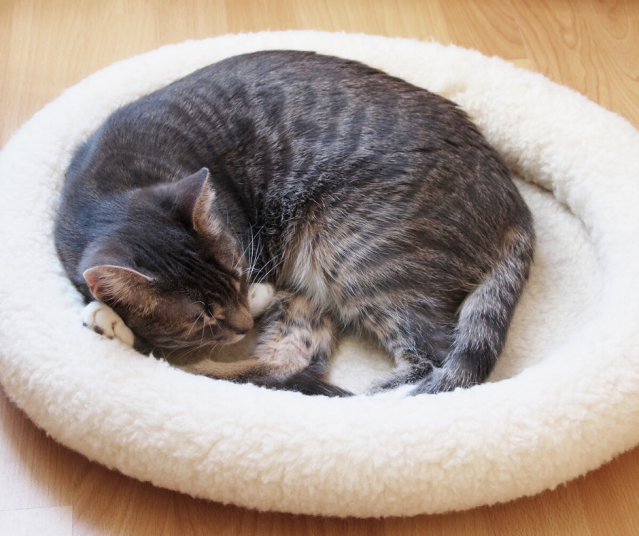Has your pet’s behavior changed during the pandemic? Dr. Homyk offers some tips and tricks for minimizing stress and anxiety.

There is no doubt that life during a pandemic has disrupted our daily lives as we start to face a new “normal.” The same is true even for our pets as humans are spending more time at home than ever before. This change in routine is impacting our pets, but can you spot how? Many people have noticed strange behaviors coming from their pets, such as pacing, vocalizing, scratching, yawning, and increased attention-seeking behavior. Although these behaviors are normal for our pets, they seem to occur in an abnormal situation. These so-called “displacement behaviors” are our pet’s way of coping with stress, similar to us twirling our hair or biting our fingernails. If you notice these behaviors in your pets at home, Dr. Homyk has provided some useful tips and tricks for minimizing stress and anxiety in our pets during the pandemic:
1. Make and stick to a routine: Just like the days when you used to get ready and leave for work, having a structured daily routine for your pets will help them feel more at ease. Feed your pets at consistent times each day, stick to your morning, mid-day, or evening walks, and give your pet some undisturbed alone time during the day as they would normally have.

2. Mental and physical enrichment: Just like humans, pets need to have fun and exercise for their mental and physical wellbeing. Apart from taking our dogs on walks or playing fetch in the backyard, consider having indoor training sessions and teaching Fido a new trick. If you have a puppy, now is a great time to play “crate games” and teach them that crates provide a safe and comfy spot for them to relax and practice being alone. Or maybe your dog has an excellent nose – challenge them with a game of “Find It” with their favorite toy and hide it throughout the house. (Bonus treats if they bring the toy back to you!) Lastly, one of my favorite types of enrichment is using a puzzle feeder. There are so many types of balls, wobble-toys, and puzzles that hide food and encourage your pet to think. Providing a puzzle toy or a Kong stuffed with frozen peanut butter to your pet during a conference call is the perfect distraction to keep them occupied. For kitties, consider hiding their dry food scattered around the house, in their carrier, or on their cat tree. Cats love to use their natural hunting instinct to find food! (Use caution with puzzle toys in multi-pet households unless the pets can be separated in order to prevent resource guarding)

3. Alone time: This last one may be the most challenging to achieve as we love to be affectionate with our pets, and they usually prefer our company as well. With us humans being home so often, the sudden lack of personal space may be contributing to some of the stress behaviors seen in our pets. Consider leaving your pet in a crate for an hour each day with their favorite toy or treat, and give them some undisturbed quiet time. If you will be going back to work in the near future, gradually prepare your pet for alone time to minimize the stress of being alone and hopefully prevent anxious behavior. Lastly, if your pet is calm and quiet be sure to reward them with treats or gentle praise to encourage this good behavior.

If you feel like your pet has some behavior issues that need to be addressed, please call us at 703-777-3313. We are always here to help.
 Leesburg Vet Blog
Leesburg Vet Blog 